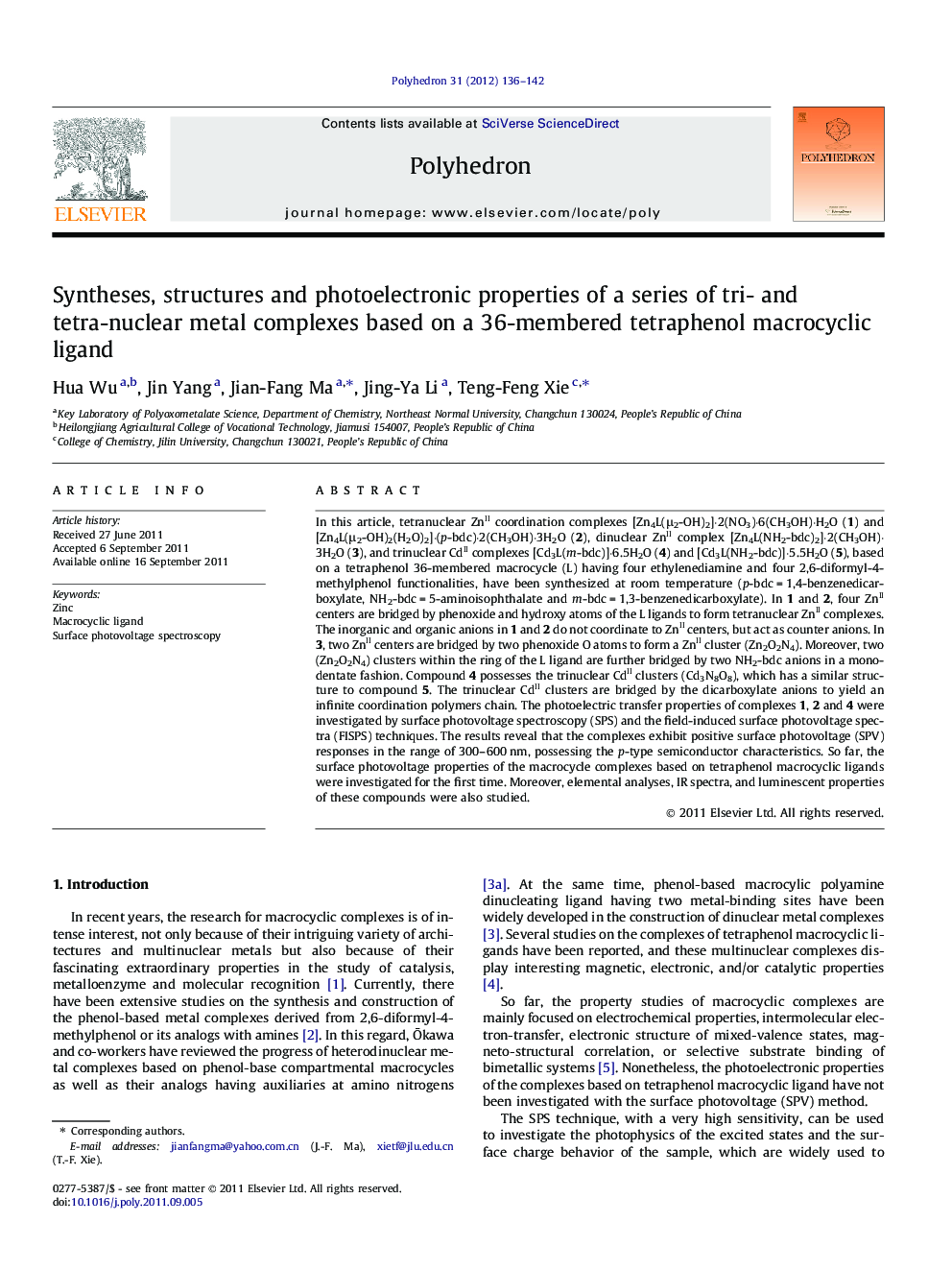| کد مقاله | کد نشریه | سال انتشار | مقاله انگلیسی | نسخه تمام متن |
|---|---|---|---|---|
| 1338171 | 979661 | 2012 | 7 صفحه PDF | دانلود رایگان |

In this article, tetranuclear ZnII coordination complexes [Zn4L(μ2-OH)2]·2(NO3)·6(CH3OH)·H2O (1) and [Zn4L(μ2-OH)2(H2O)2]·(p-bdc)·2(CH3OH)·3H2O (2), dinuclear ZnII complex [Zn4L(NH2-bdc)2]·2(CH3OH)·3H2O (3), and trinuclear CdII complexes [Cd3L(m-bdc)]·6.5H2O (4) and [Cd3L(NH2-bdc)]·5.5H2O (5), based on a tetraphenol 36-membered macrocycle (L) having four ethylenediamine and four 2,6-diformyl-4-methylphenol functionalities, have been synthesized at room temperature (p-bdc = 1,4-benzenedicarboxylate, NH2-bdc = 5-aminoisophthalate and m-bdc = 1,3-benzenedicarboxylate). In 1 and 2, four ZnII centers are bridged by phenoxide and hydroxy atoms of the L ligands to form tetranuclear ZnII complexes. The inorganic and organic anions in 1 and 2 do not coordinate to ZnII centers, but act as counter anions. In 3, two ZnII centers are bridged by two phenoxide O atoms to form a ZnII cluster (Zn2O2N4). Moreover, two (Zn2O2N4) clusters within the ring of the L ligand are further bridged by two NH2-bdc anions in a monodentate fashion. Compound 4 possesses the trinuclear CdII clusters (Cd3N8O8), which has a similar structure to compound 5. The trinuclear CdII clusters are bridged by the dicarboxylate anions to yield an infinite coordination polymers chain. The photoelectric transfer properties of complexes 1, 2 and 4 were investigated by surface photovoltage spectroscopy (SPS) and the field-induced surface photovoltage spectra (FISPS) techniques. The results reveal that the complexes exhibit positive surface photovoltage (SPV) responses in the range of 300–600 nm, possessing the p-type semiconductor characteristics. So far, the surface photovoltage properties of the macrocycle complexes based on tetraphenol macrocyclic ligands were investigated for the first time. Moreover, elemental analyses, IR spectra, and luminescent properties of these compounds were also studied.
A series of novel tri- and tetra-nuclear metal complexes, based on 36-membered tetraphenol macrocyclic ligand, have been synthesized and characterized, where their surface photovoltage spectroscopy (SPS) and luminescent properties were studied in detail.Figure optionsDownload as PowerPoint slideHighlights
► The anions play an important role in the formation of the final structures.
► Compound 4 shows a 1D zigzag chain structure with trinuclear CdII–oxygen clusters.
► The SPS show that 1, 2 and 4 possess the characteristic of p-type semiconductor.
Journal: Polyhedron - Volume 31, Issue 1, 4 January 2012, Pages 136–142